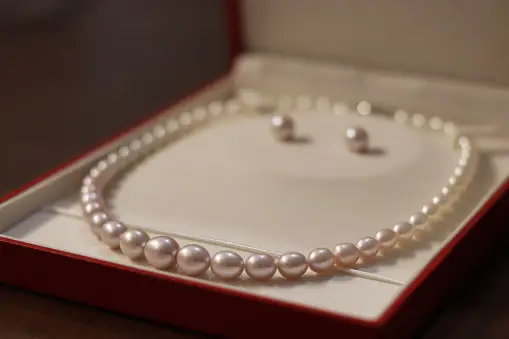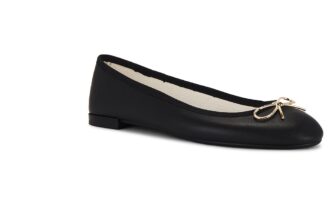Things You Didn’t Know About Mikimoto Pearls
Pearl jewelry dates back to 520 BC, however, the famous Mikimoto brand of pearls originated in Japan over a century ago. Since then, these exquisite jewels have become highly prized symbols of grace and sophistication.
But what exactly sets them apart from the rest, and most importantly, are Mikimoto pearls worth it? At a certain point in the past, they were sought after even more than diamonds!
Ahead, we’ll take a look at Mikimoto’s illustrious history, uncover the secrets behind their production process, and explore why these pearls command such high prices from even the pickiest gem connoisseurs.
Interesting Facts About The Cultural Pearls From Mikimoto
Did you know that natural pearls form inside an oyster when an irritant such as a grain of sand or a parasite enters it? The oyster then produces a substance called nacre, which coats the irritant with layers of lustrous aragonite crystals, forming a pearl.
 Photo via Unsplash
Photo via Unsplash What’s interesting is that it takes several years for a pearl to grow to its full size, and its color can vary depending on the type of oyster and the environmental conditions. Mikimoto decided to replicate this process by adding irritants to oysters on his farms, and this is how the Mikimoto cultured pearls came to be.
History and Origin of Mikimoto Pearls
Mikimoto pearls are considered to be the epitome of luxury, elegance, and sophistication. These beautiful pearls were first made by Mikimoto Kokichi, a Japanese businessman who devoted his entire life to pearl farming.
In the late 19th century, Kokichi became obsessed with finding a way to cultivate pearls, which were extremely rare and expensive at the time. He spent years studying and experimenting with different techniques until he discovered a method for creating pearls under controlled conditions.
Mikimoto’s invention revolutionized the pearl industry, making pearls accessible to a wider audience. Today, Mikimoto pearls are still highly coveted for their exquisite beauty and quality, as well as their fascinating history and origin.
Types of Mikimoto Pearl Jewelry
From delicate necklaces to stunning bracelets, there is a type of Mikimoto pearl jewelry to suit every taste. If you’re looking for a statement piece, the Akoya pearl strand necklace is a must-have. The South Sea pearl earrings are perfect for adding a touch of glamour to any outfit. For a unique twist, the Baroque pearl bracelet is an excellent choice. No matter which type of Mikimoto pearl jewelry you choose, you can be sure that you’re investing in a piece of timeless beauty that will last a lifetime.
 istockphoto
istockphoto Quality Grading System For Mikimoto Pearls
To ensure the highest level of quality, each Mikimoto pearl goes through a rigorous grading system. This grading system assesses the pearl’s size, shape, luster, surface quality, and nacre thickness. Each of these factors plays a significant role in the pearl’s overall value and beauty.
Mikimoto pearls undergo a unique treatment process to enhance their color and shine. With such a meticulous grading process, it’s no wonder why Mikimoto pearls are the ultimate statement of luxury and sophistication. Owning a piece of Mikimoto jewelry is owning a piece of history and unparalleled craftsmanship.
Care Tips For Protecting Your Mikimoto Pearls
Pearls are an exquisite addition to any jewelry collection. Mikimoto pearls, in particular, are known for their lustrous finish and unparalleled quality. It is important to take care of these precious gems to maintain their beauty over time.
One of the most crucial steps in caring for Mikimoto pearls is to avoid exposing them to harsh chemicals and substances such as perfume, hairspray, or makeup. These can cause discoloration and damage to the pearl’s surface. It is also recommended to store Mikimoto pearls in a soft cloth or pouch, away from other jewelry pieces that may scratch them.
By following these simple care tips, you can ensure that your Mikimoto pearls remain a cherished part of your jewelry box for years to come.






